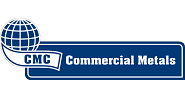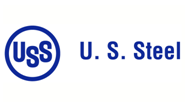Steel Mills

Construction Sectors Boost Commercial Metals' Earnings
Written by Sandy Williams
March 18, 2021
Commercial Metals Co. achieved a strong second quarter in its 2021 fiscal year despite a challenging period beset by rising scrap costs and weather disruptions. Earnings from continuing operations totaled $66.2 million on net sales of $1.6 billion. Shipments of finished steel totaled 1.44 million tons, the steelmaker reported.
CMC Chairman, President and CEO Barbara Smith said core market activity is strong in both infrastructure and residential construction. Vaccines and rollback of coronavirus restrictions are boosting confidence in the construction industry. Bid activity increased in the second quarter, both sequentially and year-over-year, and the rate of awards has stabilized backlogs to healthy levels to support future volumes.
Enactment of an infrastructure bill by Congress appears likely and versions presented in the House and Senate last year indicate that demand for rebar would increase by 1 million to 1.4 million tons. A respected indicator of construction activity, Portland Cement has raised its growth expectations for the construction sector in 2021 by 1.2%.
The migration of population from metro areas to areas served by CMC is expected to benefit residential construction. Housing permit authorizations in the South and West, in particular, have increased, and CMC Is positioned to profit from new construction in the medium and long term, said Smith.
Nonresidential construction has been especially strong in the warehouse and distribution sectors. The recovery of the industrial sector aligns with CMC’s strategy to increase participation in the merchant bar market.
CMC’s metallics inventory is typically a month and a half of material. As scrap prices rose during the quarter, CMC was able to benefit by selling its lower cost material.
“Cost performance at the mills was particularly strong, driven by network efficiencies and lower costs for consumables,’ said the company in its earnings release. “Earnings also benefited from expanded margins on sales of raw materials, as well as the impact of selling lower cost inventory within an environment of rising prices for steel products.”
Average selling price for steel products rose $70 per ton year-over-year. Steel product margins improved through Q2, ending the quarter at the highest level in nearly a year. Downstream products saw higher input costs and lower pricing on backlogged orders that resulted in lower average selling prices.
The European segment reported a 20% increase in adjusted EBITDA of $16.1 million for the quarter due to expanded margins over scrap and selling of lower cost inventory, as well as easing of imports. Steel demand in the region is healthy in both construction and industrial end markets. Steel shipments declined 7% year-over-year in the Europe segment due to unusually high volumes in the first quarter. Average selling price of $532 per ton was the highest since FY 2019, the company said.
Completion of the third rolling line in Poland is near, with hot commissioning expected in the third quarter followed by commercial production ramp-up. The new line will utilize excess melt capacity contributing 200,000 tons of finished output.
CMC’s Arizona micro mill is on target for early 2023 completion. It will be the company’s third mill and the first to produce merchant bar.
Outlook
“We expect finished steel volumes in both North America and Europe to follow typical seasonal trends during the third quarter, which is historically strong given the start of the spring and summer construction seasons,” said Smith.
“Shipments of steel and downstream products in North America should be supported by our construction backlog, with steel products also benefiting from elevated residential construction spending, continued manufacturing recovery, and anticipated strong highway infrastructure activity. Volumes in Europe are anticipated to remain healthy, driven by growing demand from construction and industrial end markets. We expect margins over scrap on steel products in both North America and Europe to increase sequentially following the realization of price adjustments made throughout the second quarter.”
By Sandy Williams, Sandy@SteelMarketUpdate.com

Sandy Williams
Read more from Sandy WilliamsLatest in Steel Mills

CRU: Tata Steel looks to shed 1,600 jobs in the Netherlands
The company said, “The challenging demand conditions in Europe driven by geopolitical developments, trade and supply chain disruptions and escalating energy costs have affected the operating costs and financial performance."

Reports: Federal funding for Cliffs’ project could be slashed
Elon Musk's DOGE is determining which Department of Energy grants to advance and which ones to terminate, according to several media outlets

Trump still against selling USS to Japanese firm: Report
Despite ordering a new review of Nippon Steel’s bid for U.S. Steel, President Trump said he is still against selling USS to a Japanese company, according to media reports.

Algoma looks to sell more steel in Canada in wake of Trump’s tariffs
The Canadian steelmaker said its absorbing higher tariffs as it moves forward.

Ancora abandons plan to take over leadership of USS
Investment firm Ancora Holdings Group has halted its play for U.S. Steel's board, citing Nippon Steel’s proposed bid for USS “gaining momentum.”
